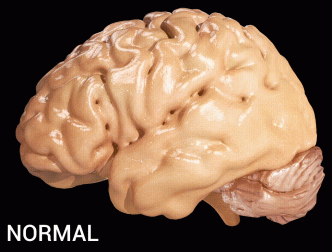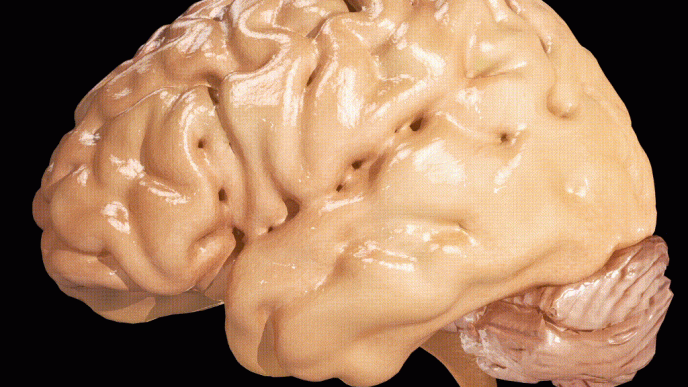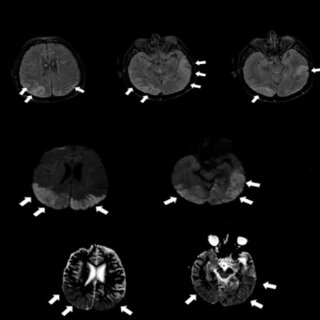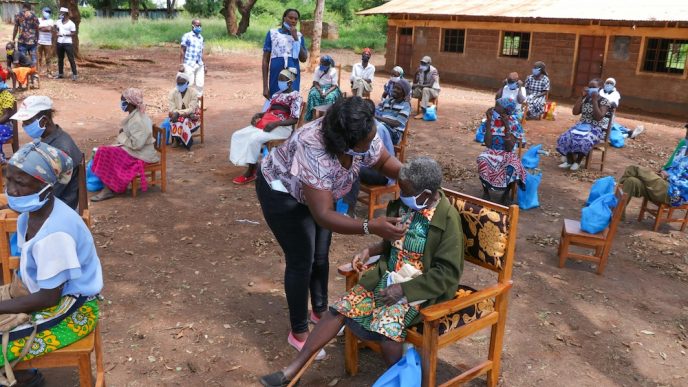Table of Contents Show
Abstract
The swift adoption of AI in education has necessitated the need for teachers to be AI literate. This research is a comparative study of AI literacy among public and private school teachers in Ibadan, Nigeria. It will investigate the likely digital divide that exists among teachers in secondary schools and the available institutional support. It aims to expose the discrepancies in resource availability and ascertain if gender and teaching experience have anything to do with AI competency and integration. The study will make use of 400 teachers from public and private secondary schools in Ibadan metropolis using a stratified random sampling technique that will span across the 11 local government areas in Ibadan city. Selection of samples will be based on the characteristics and availability of resources in selected schools. Data for the study will be gathered with a quantitative, specially designed instrument tagged: AI Literacy, Institutional Support, Teachers’ Demographic and Assessment Questionnaire (AI_LIS_TDAQ). The quantitative instrument will be populated with closed-ended questions designed on a four-point Likert scale that will inquire information from respondents on the level of AI literacy among teachers in public and private secondary schools and differences in the level of institutional support for AI literacy development between public and private secondary schools. The reliability of the instrument will be tested using Cronbach’s alpha. Data will be analysed using descriptive statistics of standard deviation, mean and inferential statistics (T-test). Based on the findings from the study, recommendations will be made to different stakeholders in education.
Key words: AI literacy, institutional support, secondary school teachers, resource, Ibadan
Introduction
The emergence and inclusion of artificial intelligence (AI) into educational activities demands an urgent and critical examination of teachers’ readiness to use new technologies efficiently. According to recent surveys by Li et. al. (2024), only 38% of instructors are aware and able to utilise basic AI frameworks like AI4K12, despite the fact that 69.23% report confidence in their ability to comprehend AI outputs and challenges. These findings reveal crucial gaps in educators’ knowledge of AI, the differences increased as a result of institutional and demographic factors, calling for thorough examination of how teacher attributes and school systems influence the adoption of AI.
While Zhao et. al. (2022) see technical expertise, ethical awareness, and the capacity to use AI tools in teaching as components of AI literacy, Roshan et.al. (2024) argue that lack of training is the most alarming challenge to AI integration in schools, covering 60% while insufficient resources stand at 40%. Again, this is attributed to a lack of well-organised institutional supervision or training. However, there are clear sectoral inequalities as instructors at private schools are adopting AI at higher rates than their counterparts in public schools (BCS 2024), which is probably due to differences in resources and policy frameworks. For example, 41% of schools do not have explicit AI policies, which exacerbates uneven implementation and leaves teachers to handle moral and practical dilemmas on their own (BCS 2024). Lack of uniform policies frequently results in resistance to AI by some educators who fear that it will be abused (BCS 2024; AISCOOP 2024). Interdisciplinary curricula and collaborative project-based learning have become viable approaches to closing this gap, especially in secondary education contexts where fundamental AI ideas are given priority (Ng et. al. 2024). However, institutional commitment determines how effective these strategies are, underscoring the need for comparative research on support systems in various school types.
According to Moravec (2024), demographic factors like age, gender, and level of education strongly influence AI awareness. Adoption of AI is inversely correlated with teaching experience, as younger teachers are more open to trying out new technologies (Bakhadirov and Alasgarova 2024). This pattern can be due to the failure of institutions in upgrading instructional approaches for seasoned educators or differences in generational comfort with technology. Gender differences are likewise noticeable: while female educators advocate for rule-based applications centred on ethics and student safety, their male counterparts are more inclined to deploy AI for efficiency and creativity (AISCOOP 2024; Oriel Square 2023). These discrepancies are pointers to the need for gender-responsive policy frameworks and training programmes that address conflicting priorities and obstacles (Oriel Square 2023).
This study employs two key theories. The Technological Pedagogical Content Knowledge (TPACK) framework (Koehler and Mishra 2009) examines how teachers integrate AI (technological knowledge) with pedagogy and subject content, stressing that effective adoption requires balancing these domains. It addresses competency gaps and training efficacy. Social Cognitive Theory (Bandura 1986) explores how self-efficacy, social modelling, and institutional support influence AI adoption. SCT explains demographic disparities (e.g., gender, experience) and how environmental factors (e.g., resources, policies) shape teachers’ willingness to use AI. Together, these theories analyse both the technical-pedagogical (TPACK) and motivational-environmental (SCT) dimensions of AI literacy in education.
Statement of the Problem
Despite the attention given to AI in education, there is a growing concern about the variations between teachers’ literacy levels in relation to school types (public and private) and demographic categories (gender and experience). Few studies look at systemic disparities in institutional support, while some research highlights general challenges militating against AI adoption, such as a lack of professional personnel. In order to fill these gaps, this study aims to compare AI literacy levels across school systems in Ibadan metropolis. It exposes discrepancies in resource availability, examines variations in institutional support between public and private schools, and ascertains if gender and teaching experience have anything to do with AI competency and integration. Using this approach, this study will offer an opportunity to filter out the obstacles and evidence needed to support AI literacy and provide tailored equity-focused treatments for educators in Nigeria.
Objective of the study
The specific objectives of the study are to:
- Find out the level of AI literacy among teachers in public and private secondary schools in Nigeria.
- Establish the difference in the level of institutional support for AI literacy development between public and private secondary schools.
- Ascertain if teachers’ demographic factors (years of teaching experience) predict their ability to integrate AI into their teaching practices.
- Find out if the difference in AI literacy level is based on gender in public and private secondary schools.
Research questions
- What is the level of AI literacy among teachers in public and private secondary schools in Nigeria?
- What is the difference in the level of institutional support for AI literacy development between public and private secondary schools?
- Do teachers’ demographic factors (years of teaching experience) predict their ability to integrate AI into their teaching practices?
- Is there a significant difference in the AI literacy levels between male and female teachers in public and private secondary schools?
- Are there significant differences in AI literacy levels between teachers in public and private secondary schools?
Methodology
For this study, a descriptive survey research design will be utilised. The study will make use of 400 teachers from public and private secondary schools in Ibadan metropolis using a stratified random sampling technique that spans across the 11 local government areas in Ibadan city. Selection of samples will be based on the characteristics and availability of resources in selected schools. Data for the study will be gathered with a quantitative, specially designed instrument tagged: AI Literacy, Institutional Support, Teachers’ Demographic and Assessment Questionnaire (AI_LIS_TDAQ). The quantitative instrument will be populated with closed-ended questions designed on a four-point Likert scale that will inquire information from respondents on the level of AI literacy among teachers in public and private secondary schools, differences in AI literacy levels and institutional support for AI literacy development between public and private secondary schools. It will also examine demographic factors in relation to the possibility of predicting teachers’ ability to integrate AI into teaching practices, as well as checking the significant difference in AI literacy levels between male and female teachers in public and private secondary schools. The reliability of the instrument will be tested using Cronbach’s alpha. Data will be analysed using descriptive statistics of standard deviation, mean and inferential statistics (T-test). Based on the findings from the study, recommendations will be made to different stakeholders in education.
Findings
The findings and recommendations in this study will enable different stakeholders in education find appropriate solutions to AI literacy among secondary school teachers in both public and private secondary schools in Ibadan metropolis and, by extension, Nigeria as a country.
Interdisciplinary implications
This study is relevant to enhancing AI literacy among all secondary school teachers in Nigeria, as the findings and recommendations would be useful for all stakeholders in both school categories.
Conclusion
AI is a growing field that cuts across all aspects of life, in which education is of great importance. Research in this regard is vital to finding out how well secondary school teachers in Nigeria are positioned to circumvent being left behind in a world that is becoming more complex with everyday technology. This is the main objective that this study will help to address.
References
AISCOOP. (2024). Teacher gender matters in classroom AI policy. Edscoop. https://edscoop.com/classroom-ai-policy-gender-usc-university-k12/
Bakhadirov, M., & Alasgarova, R. (2024). Factors Influencing Teachers’ Use of Artificial Intelligence for Instructional Purposes. IAFOR Journal of Education, 12(2), 9-32.
BCS, The Chartered Institute for IT. (2024). Most teachers reluctant to use AI for learning and assessment, new research finds. https://www.bcs.org/articles-opinion-and-research/most-teachers-reluctant-to-use-ai-for-learning-and-assessment-new-research-finds/
Chee, H., Ahn, S., & Lee, J. (2024). A Competency Framework for AI Literacy: Variations by Different Learner Groups and an Implied Learning Pathway. British Journal of Educational Technology.
Li, H., Xiao, R., Nieu, H., Tseng, Y. J., & Liao, G. (2024). ” From Unseen Needs to Classroom Solutions”: Exploring AI Literacy Challenges & Opportunities with Project-based Learning Toolkit in K-12 Education. arXiv preprint arXiv:2412.17243.
Moravec, V., Hynek, N., Gavurová, B., & Kubák, M. (2024). Everyday artificial intelligence unveiled: Societal awareness of technological transformation. Oeconomia Copernicana. https://doi.org/10.24136/oc.2961.
Ng, D. T. K., Su, J., Leung, J. K. L., & Chu, S. K. W. (2024). Artificial intelligence (AI) literacy education in secondary schools: a review. Interactive Learning Environments, 32(10), 6204-6224.
Nikolic, S., Wentworth, I., Sheridan, L., Moss, S., Duursma, E., Jones, R. A., … & Middleton, R. (2024). A systematic literature review of attitudes, intentions and behaviours of teaching academics pertaining to AI and generative AI (GenAI) in higher education: An analysis of GenAI adoption using the UTAUT framework. Australasian Journal of Educational Technology.
Oriel Square. (2023). AI for teachers: Demystifying AI in schools https://www.orielsquare.co.uk/wp-content/uploads/2023/07/Education-Intelligence_teacher-event_delegate-pack.pdf. Retrieved 9 May, 2025
Roshan, S., Iqbal, S. Z., & Qing, Z. (2024). Teacher Training and Professional Development for Implementing AI-Based Educational Tools. Journal of Asian Development Studies, 13(2), 1972-1987.
Shi, R. (2024). Research on the Current Situation of Artificial Intelligence Literacy of Teacher Trainees and Strategies to Improve It. Advances in Educational Technology and Psychology, 8(1), 126-133.
Zhao, L., Wu, X., & Luo, H. (2022). Developing AI literacy for primary and middle school teachers in China: Based on a structural equation modeling analysis. Sustainability, 14(21), 14549.











